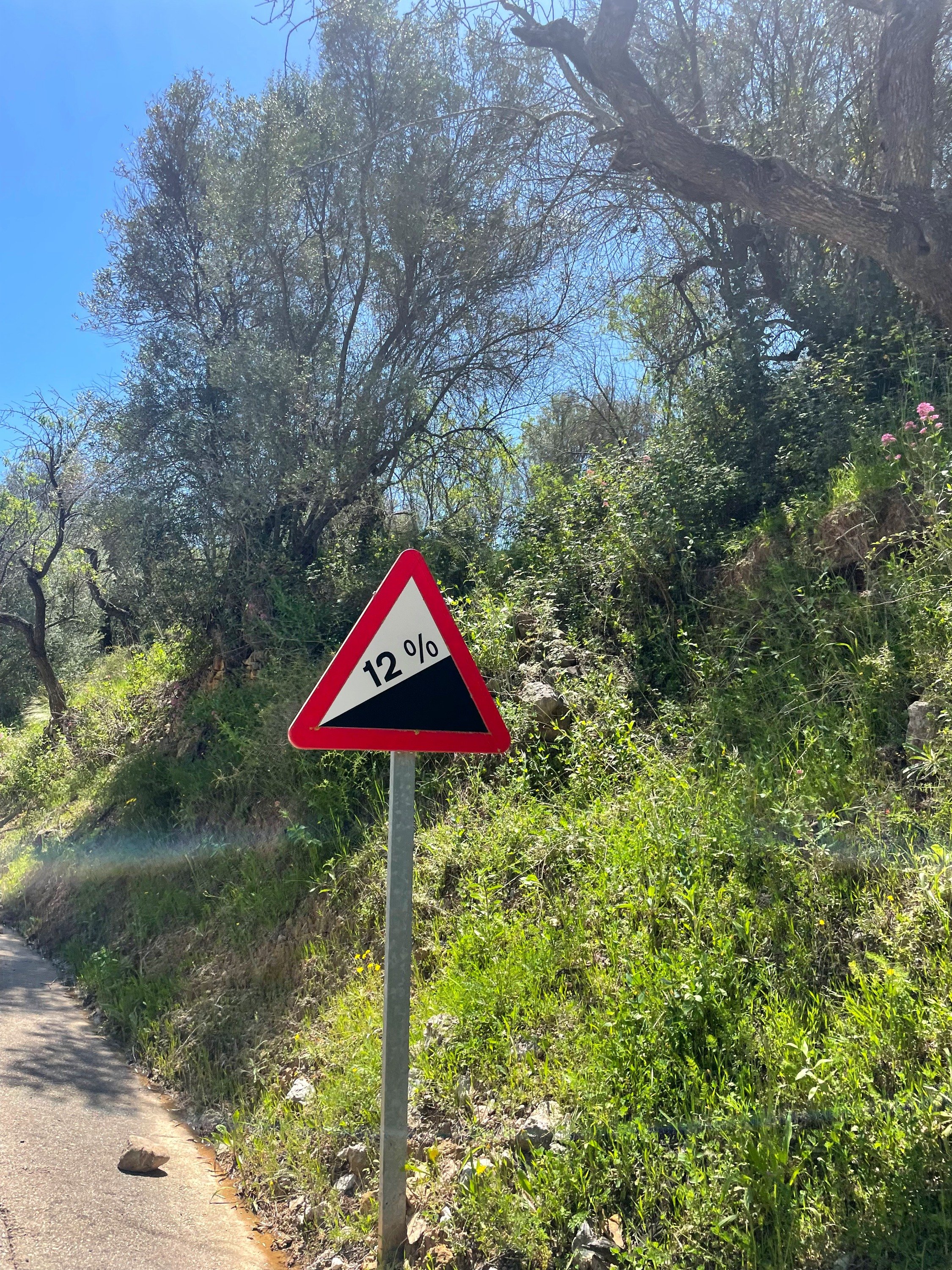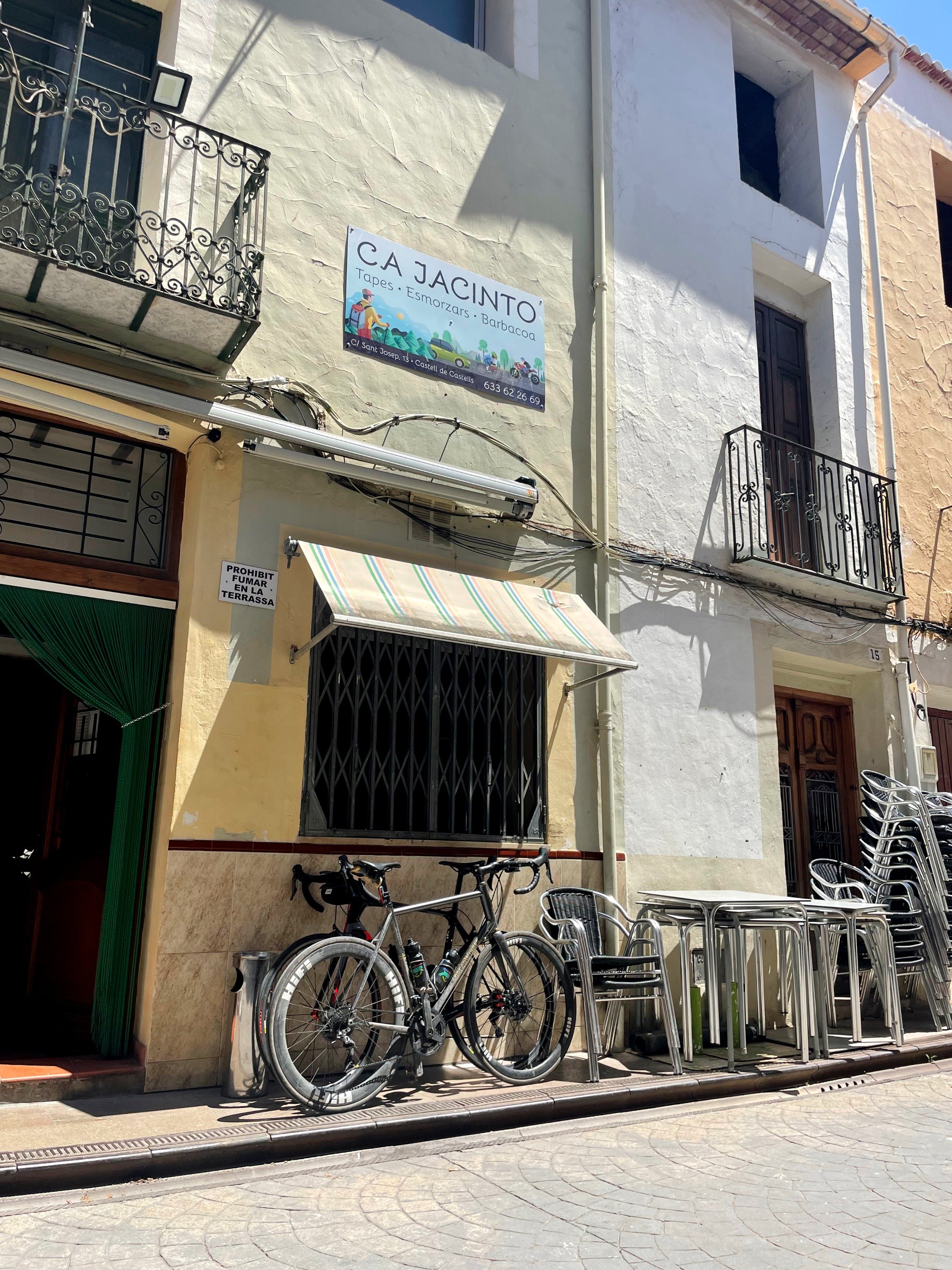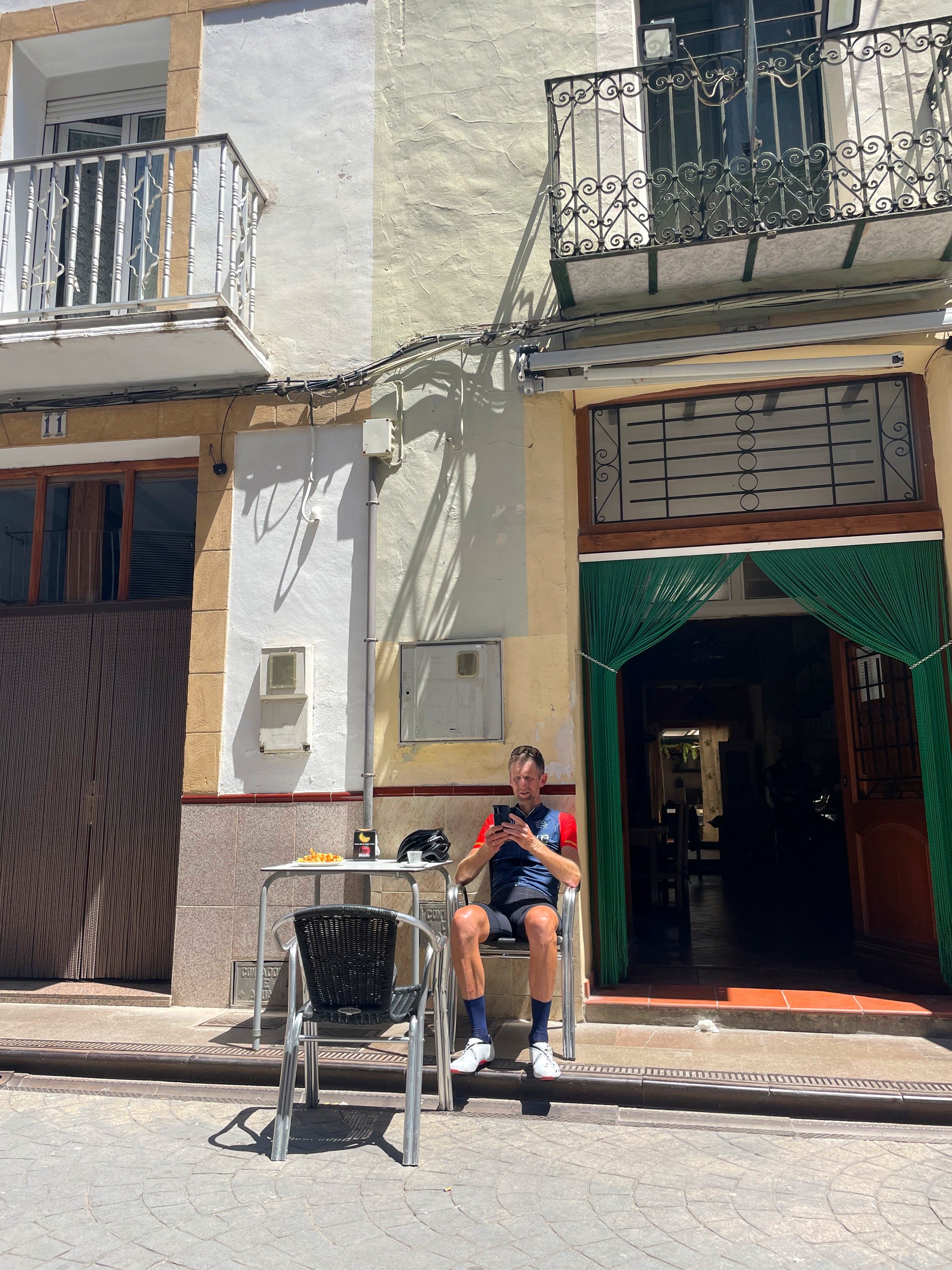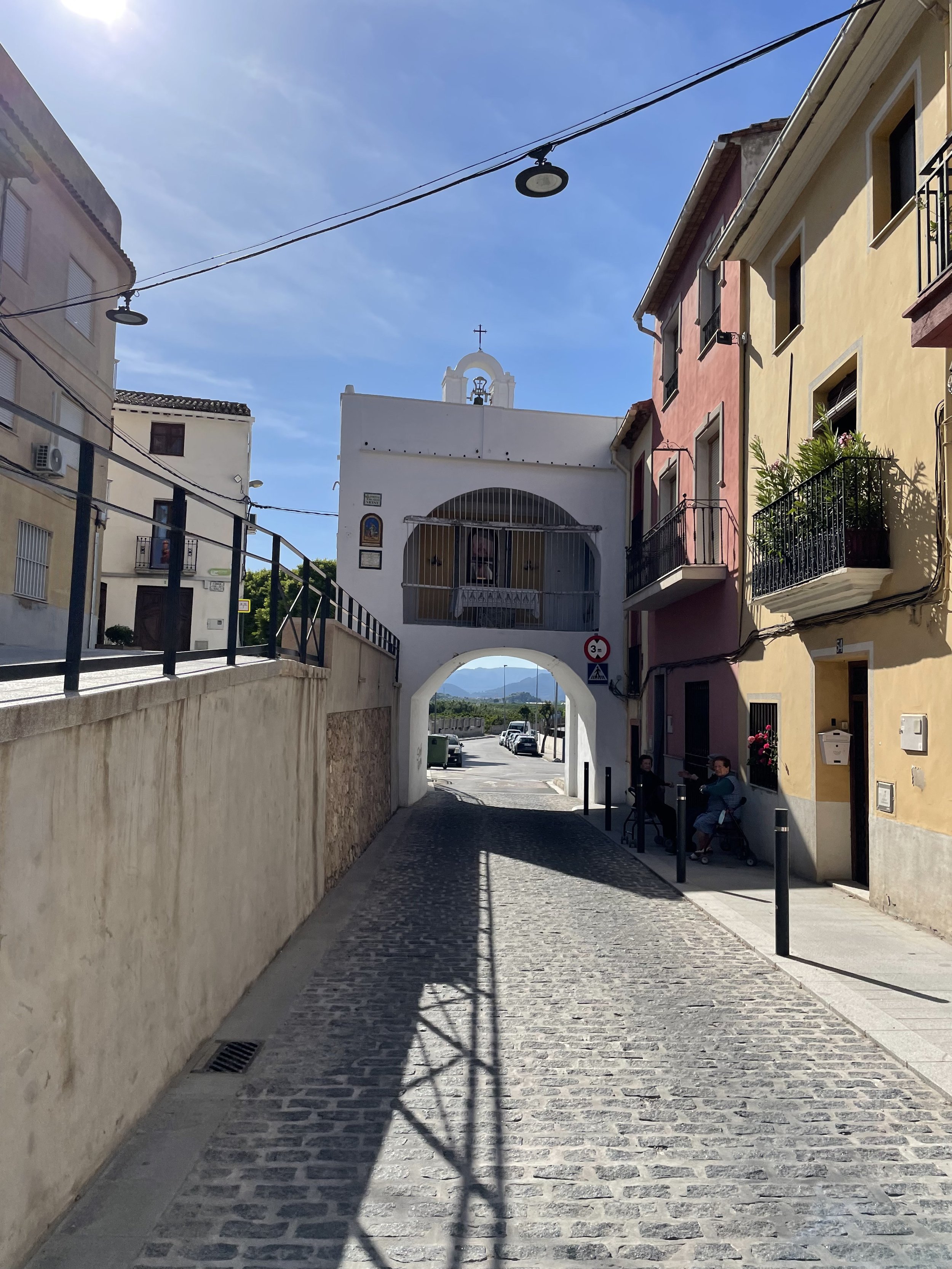Long Way To Coll De Rates
Valencia, my sanctuary of 2022.
You don’t need me to sell you on cycling in Spain; it’s a one-of-a-kind cycling destination and a right of passage for any devoted cyclist. Although most famous cycling spots are either on the Islands (Mallorca & Canary Islands) or the north in Girona and the Basque country. There are some true hidden gems in the lesser-visited region of Valencia.
Perhaps I shouldn’t be shining a light on them out of selfishness, but they are just too good to do that.
On my last trip, I embarked on a big day in the saddle from Xativa towards the Costa Blanca. Climbing up & descending down some of the best lines the area has to offer. I mean, how could I not?
Phil reached out to link up on a ride where we meet halfway and ride together. Given that he lives near the famous Coll De Rates, and I was staying in Xativa, the best meeting point was the historical town of Planes. Rightfully halfway through as the crows fly.
Although I’ve already ridden up Coll De Rates once before, I’ve never done so from my front door. It's a climb worthy of venturing out for. Coll De Rates might be one of the most famous climbs in all of Spain, given that countless pros winter camp in the area and train up the climb daily!
It is not the hardest, steepest, or most epic climb by any means, yet it still holds legendary status as the “climb of the pros.” Seriously, it is almost guaranteed that you’ll run into a pro team on their training rides during the off-season, which is quite telling about the long-running cycling history of Spain.
This was not a normal day in the saddle, and it most certainly challenged me in the middle part, which is the most mountainous section. Actually, all of it was mountainous, as there were no flat roads whatsoever! This route is a good survey of the topography and hidden gems of the Costa Blanca that always seem to uncover themselves with every ride.
In hindsight, this day was as tough as it was rewarding.
Route:
Ride Report:
As is the case with my rides from Xativa, I ventured east to El Genoves town at the base of a pass that connects La Costera & Val De’Albaida. First climb of the day out of the way, with the second longer climb, up Alt De Pinaro, was in sight across the Albaida Valley. This ride out of Xativa became a frequent start to many of my rides; I can never have enough of the quaint roads around there.
The first half of the valley is a slight slope down towards the middle, with a creek crossing on the way up towards Castelló de Rugat, which sits at the base of the pass.
The Pass is the dividing point between Valencia and Alicante provinces.
From the summit of Benicadell, the peaks of the Costa Blanca are in sight, towering over the horizon, and Planes water reservoir at the bottom. The descent from the summit all the way to the water dam is worthy of any elevation gain leading up to it, simply unmatched!
Premium pavement, tight corners, and incredible views all around. Typical of the Valencian countryside.
Although I’ve done this part of the ride many times over, I’ve never taken the back roads through an orange farm before. That added a Valencian touch, for sure. The dam marks the bottom of the valley, and I’m climbing yet another steep kicker, but a bit shorter than the previous two.
With the castle capping the town of Planes in sight, I reached the day's first stop.
Planes is a charming little village built on and around a rock formation standing up at the eastern edge of the water reservoir. With its medieval charm, historic castle, and abundance of cafes, it’s, without a doubt, your best place to stop in the area. As is the case with many cyclists who venture into the mountains of Costa Blanca.
Phil was already there waiting for me; these mountains are in his backyard anyways. We both got a much-needed cup of coffee and the legendary must-have snack in Valencia, Tostadas con tomates. A piece (or two) of Spanish bread, toasted with EVOO, salt, and topped with freshly grated tomatoes.
Hands down my go-to whenever I make a café stop. (Although the one in the photo below isn't the best example)
Fueled and ready to climb, I followed Phil up yet another kicker; by now, we were at the helm of some of the best climbs in the region, from Planes to Millena, Gorga, and beyond.
The climb out of Planes hugs the sides of Lloma Redona, a giant ash-white mountain with orange and olive farms as far as you can see. The sheer roughness of these mountains makes it seem like they were shot up from below, with their impressive wall-like slopes and field-topped summits.
Eye candy for those terrain geeks in the saddle, like me.
The prominence of the Costa Blanca is wide open at points where you can read the full geographic changes from the bottom of the valley to the summit. Then suddenly, you find yourself in a tight zigzagging canyon as if the skies are closing in on you, and they do at points, especially with the canopies of pine & juniper trees around.
Just as you get comfortable in the canyon, you reach this small hump at the top of the climb, and boom, out in the openness again!
The compression & expansion of the topography of these mountains orchestrated by the natural order of the tectonic shits is arguably the best architect out there, mother nature.
Riding our way uphill over the rollers, tight turns, and through the plethora of small towns, such as Banimassot (The tribe of Massoud, Islamic history is everywhere there!) and upwards toward the village of Fageca. Phil turned around and shouted, “This is a good [descent] one!”.
He wasn’t wrong.
Phil has been riding these parts of Spain, and all over in fact, for years, and knows the roads like the back of his hands, if not a bit better, dare I say!
We flew down the ripper of a descent, twisting and winding with the canyons and roads under the thick canopy of Mediterranean Pine. At the bottom, we reconnected in the village of Castell De Castells. 23 miles after our first pitstop, and I’m already drained. So a quick snack was in due course. This was also our parting point since Phil wanted to keep it a light day and is taking the easier way home, which is very smart of him, knowing what's to come.
From town, I returned to the main road and followed the signs to Port De Sa Creueta, a 3.6-mile climb with over 1000ft of elevation gain—a true kicker.
I hadn’t known what was yet to come after this climb. I was in for a big reveal of some of the best roads in the area. So after slugging up the steep climb, I reached the summit with a renewed sense of exploration and going forward.
I take it, fellow reader/rider, that you are well aware of the rebirth moments we go through as riders on those long, challenging, and memorable rides. As if my legs were never even tired.
With this newfound energy and excitement, I took on the snappy and twisting roads down the mountains, up a few kickers, and finally, climbed up through the backdoor of the famous Coll De Rates.
The closer I got to the mountains near the coastline, the more bikers I saw, whereas I would likely be the only one riding around in Xativa. Along the climb, I ran into people from all over the world, each connecting with the other with their unique cycle-linguistic norms. Be that a swing of the head for Spaniards, a wave, or a simple “you got this!” from what I presume to be English speakers.
Regardless of their background, the fact that we not only embrace the suck but enjoy it as well is a strong enough bond that transcends cultural, linguistic, and historical boundaries.
Cycling, am I right?
At last, the halfway point of the route, the (lower) summit of Coll De Rates.
62 miles in, with over 8600ft under my heels already, I was starting to feel it a bit. But a legendary climb/descent helps ameliorate some of that for sure.
Flowing down the valley after paying my dues to the climbs before, I stopped at yet another small village for a much-needed lunch break, ahead of the behemoth of a backroad climb I decided to throw in to see what was out there.
The pitstop came in clutch per usual, but with the sustained climbing, heat, and lack of electrolytes in my bottles (friendly fire), I began to feel the engines slowing down and fatigue rising. However, the only way home is to finish the route—no way around that.
The tumbling thoughts in my head fight over one another; one screams, “We can’t do this, abort!” while the other gently reminds me, “You’re doing it.”
I pushed through, regardless.
Until I came across the climb…
It was much steeper than the numbers on the maps, perusal, but that’s the beauty of finding out.
The climb goes straight up tight mountainous farm roads (As small as bike paths in the US at some points!), with the steepest sections at the tight hairpins, mostly shaded under trees that eventually thin out as you climb.
To think that people have lived up these rugged mountains for thousands of years without leaving much human footprint other than dilapidated stone homes and hundred-year-old olive trees is evidence of a healthier relationship between man and land.
Yes, these are some of the thoughts that go through my head to escape the 25% grades I was suffering through on the steep climb. The summit couldn't have come any sooner, yet I felt the climb was the journey and, in hindsight, was the best part of that halfway point on the route.
With the Coastline across the horizon and the descent towards Pego about to start, I knew I was inching closer to home. The descent from the summit zigzags down into the busy side of the mountain, showing the stark difference a short distance can bring. Passing through the villages hugging the mountainside, white walls contrasting between the green of the pines and shades of earth.
Next came the rollers of the coastline, where you have a few options, either stay closer to the mountains and add more elevation or ride the flats closer to the Playa. I opted for the less busy rollers and familiar farm roads.
I rode across the populated coastline and through historic cities such as Pego, Oliva, and Gandia. Famous for their bullrun traditions, golden coastlines, and much more. Out of Gandia came the second to last and yet another steep climb up and over the coastal range and into La Costera valley.
Although it wasn’t as steep as the halfway point, but after 100 miles and 12,250ft of elevation, my legs were spent. The climb takes you up to La Drova, a small chalet community at the mouth of a narrow valley squeezed between the coastal and inner mountains. Luckily, the sun was slowly sinking behind the peaks, waning its heat away, and the cool evening breeze rolled in. I carried my dead legs up the hills; getting passed by a group of mountain bikers was a tell tail sign that I was indeed slugging my way up!
This was one of those climbs that gets steeper as you get closer to the summit, maxing out at 20% in some spots. Along the way, a bunch of cyclists were making their way up, and almost always, they got positive words of encouragement as we all made it past the “cima” sign at the top, an indicator that you reached the summit.
Finally, La Drova and the last kicker in sight.
This narrow pass means a lot to me, as my grandfather used to take us to a water spring to fill up our bottles and hang out under the big tree that covered the area (it's massive). Every time I passed by that spring, I could see my grandfather, Ibrahim, and a few of my cousins all hanging out there. Sometimes I get the chills, and other times a tear runs down, but regardless, I feel warmth in my heart that I got to experience such a thing.
I filled up my bottle from the spring and biked across the cracked concrete mountain roads that probably have seen thousands of years of civilizations.
Again, in hindsight, those climbs and the suffer fest I went through on this ride were, without a doubt, the highlight.
The sun was behind the mountains, and I rode through the quaint farm roads in the twilight. Alas, the journey ended when I reached my beloved home in Xativa after a long descent back.


























